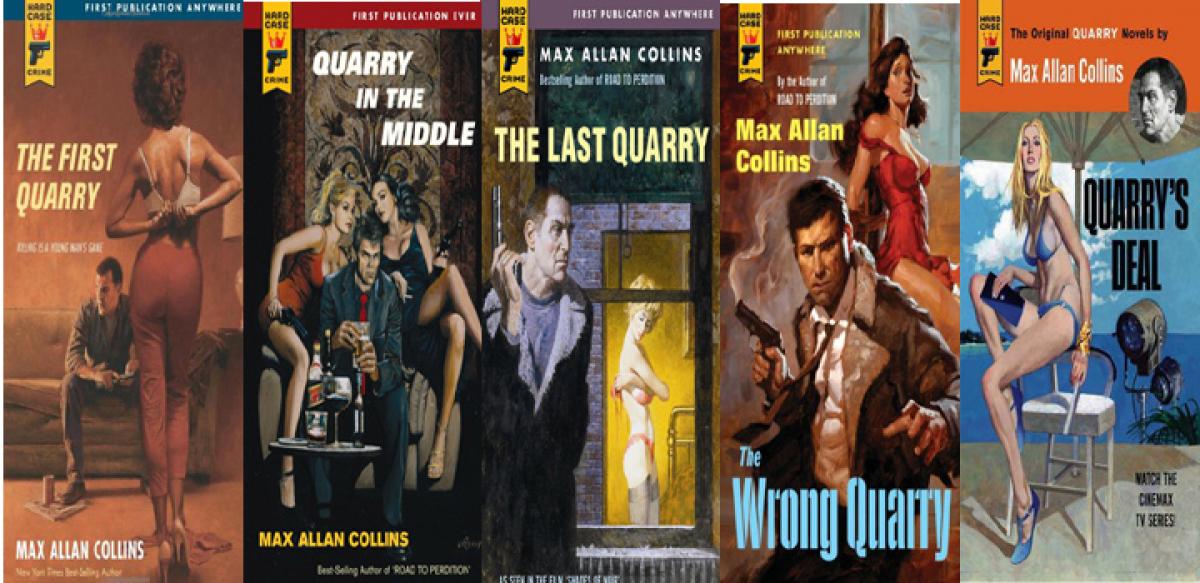The suave anti hero

Stories we are used to when young have clearly discernible heroes and villains but this may change up as we grow – particularly in adolescence, or when exposed to the real world\'s less clear-cut distinctions and imperfections. Then a less-than-noble, rule-breaking hero or the anti-hero may be more to our taste – and has been for years – James Bond, \'Godfathers\' Vito and Michael Corleone, or for us
Stories we are used to when young have clearly discernible heroes and villains but this may change up as we grow – particularly in adolescence, or when exposed to the real world's less clear-cut distinctions and imperfections. Then a less-than-noble, rule-breaking hero or the anti-hero may be more to our taste – and has been for years – James Bond, 'Godfathers' Vito and Michael Corleone, or for us, the 'Angry Young Man', and many others on the "wrong side" as far as motives and/or methods are concerned.
While anti-heroes have always been part of story-telling tradition, it is only in the 20th century they have come into their own to become principal protagonists – and usually in a more lethal avatar. This may be due to the turbulent century's big and small wars – which end with a considerable number of men trained to kill coming back to civilian life. While many do re-adjust, a few need to find an outlet for the violence they are still capable of. Like Max Allan Collins' "Quarry", who is back in the limelight after four decades.
Collins (b.1948) has been a prodigious and prolific mystery writer across all forms – novels, screenplays, comic books, comic strips (like Dick Tracy), short stories, movie novelisations (‘Saving Private Ryan’, ‘Waterworld’, among others) and historical fiction -- and his sheer output is only matched by its diversity.
He has to his credit at least 12 series of which the best known is the 20-odd installment Nathan Heller series about a Chicago private investigator who gets involved in famous crimes of the 1930-1940, the half-a-dozen “Disaster” series about a mystery entwined around a real-life scenario like the Titanic sinking or the Pearl Harbor attack, and graphic novel ‘Road to Perdition’ series about a mob enforcer and his son in the Depression-era America seeking vengeance against a mobster, who murdered the rest of their family (adapted into a 2002 film starring Tom Hanks, Paul Newman and Daniel Craig).
But it is the Quarry series about a former US Marine sniper turned professional assassin that was his first – and longest-lasting. Of the first ‘The Broker’ (1976, reissued as "Quarry", 2015) which he began to write in 1971 when at the Writers Workshop at the University of Iowa but only found a publisher in 1975 – Collins says that apart from proving that "crime fiction could be written using a common Midwestern small-town setting rather than the much more common New York or Los Angeles" was to create a higher level of anti-hero – having already done so with his Nolan series about a professional thief – taking up a notch by making the character a hired killer, but otherwise "a normal person in his early twenties – not a child of poverty or cursed by a criminal background, but a war-damaged Vietnam veteran". And he would narrate the story first person.
Our hero – we never learn his real name – returns home from Vietnam to find his wife cheating on him. Resolving to leave her, he first wants to find his rival's intentions. But when he goes to meet him, the cocky adulteror – who is working under a car – sneers at our hero, who kicks away the jack, crushing him to death. Arrested and tried but acquitted, he, now cut off from his family and is virtually unemployable, is approached by the "Booker", who offers him a job as a contract killer, and on his agreement, renames him Quarry.
The adventures are not linear – the opening novel begins with Quarry five years into the profession and realising the mission he is on is a huge double-cross. ‘The Broker's Wife’ (1976, reissued as ‘Quarry's List’, 2015) sees him break out independent – and in a different role. In possession of the Broker's papers, he now tracks the other killers working for his former boss, ascertains their targets, whom he approaches and warns of the threat. For a fee, he offers to eliminate the assassin concerned and for some more, the person behind it.
This goes on in ‘The Dealer’ (1976, as ‘Quarry's Deal’ 2016), where the other assassin is a beguiling woman; ‘The Slasher’ (1977, as ‘Quarry's Cut’, 2016), where dead bodies start piling up in a pornographic film shoot; ‘Primary Target’ (1987, ‘Quarry's Vote’ 2016); short story collection ‘Quarry's Greatest Hits’ (2003); ‘Quarry In The Middle’ (2009); ‘Quarry's Ex’ (2010), where he runs into his ex-wife at a film shoot, and ‘The Wrong Quarry’ (2014).
On the other hand, ‘The Last Quarry’ (2006), which resurrected him, is his last caper with an explosive finale, ‘The First Quarry’ (2008) his first case and ‘Quarry's Choice’ (2015) is also a flashback. Though full of violence – and sex – the series is made unforgettable by the main character himself, who may be a killer but not a psychopath, insightful enough to know when something is wrong in the story he has been told and a moral compass to righten matters, as well as tight plots, tersely vivid descriptions and crisp dialogues. The series are available as e-books from the Hard Case Crime collection.

















